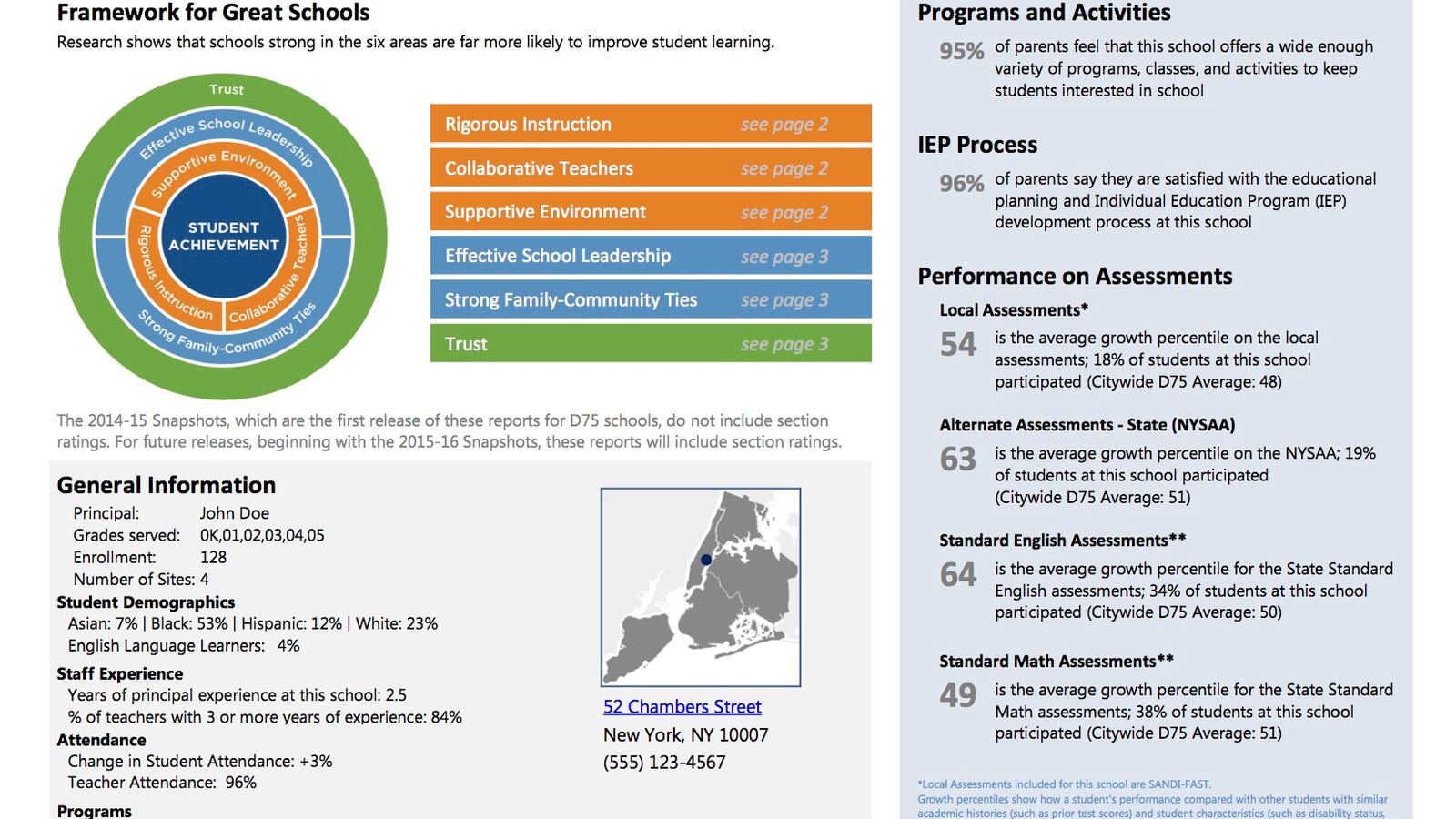Schools serving thousands of New York City’s highest-need students will get public report cards Thursday, after being left out of the first two rounds of annual reports under Mayor Bill de Blasio.
The “School Quality Snapshots” are meant to give families a clear sense of the quality of each New York public school, and will for the first time include transfer schools, which enroll drop-outs and students who fell behind at traditional high schools, and schools in District 75, which serve students with more severe disabilities.
Also included for the first time are Young Adult Borough Centers, which offer evening classes for high school students who are behind in credits, and schools that serve students exclusively from kindergarten through second grade. Together, the programs that are getting snapshots for the first time enroll nearly 58,000 students.
The new report cards are similar to those already produced each year for the rest of the city’s public schools, and include everything from basic demographic information to performance on various exams.
But the city’s new snapshots will also include measures that are specific to the type of school being assessed. District 75 report cards, for instance, describe the type of special ed programs the school offers, the extent to which students improve on a range of tests, and includes a statistic about how satisfied parents are with the process of crafting education plans for individual students.
“A big complaint of the District 75 advocacy community is we’ve always been treated separately,” said Lori Podvesker, disability policy manager at INCLUDEnyc and a District 75 parent. “The message here is that mine are just as important as kids in other schools.”
The new transfer school report cards, by contrast, include data on whether students graduate before they turn 21 and age out of the public school system, instead of the four-year rates listed in traditional high school snapshots. They also include a new measure of “persistence” which shows the percentage of students who graduated, earned an alternative credential, or remained enrolled.
Advocates had criticized the de Blasio administration for leaving these programs out when it revamped the annual report cards last year, arguing that parents of the neediest kids have the same right to information about their schools, and that the lack of clear data makes it harder to hold them accountable.
And while those advocates largely said the new report cards are a step in the right direction, they also pointed out ways in which the data are unclear or leave out key details that parents might find useful.
Podvesker, for instance, emphasized that the District 75 report cards don’t include information about what after-school activities or arts programs are offered, details that are included in snapshots of traditional schools.
Other advocates said they wished the new snapshots contained more information about whether there are other schools in the building, something parents of children with disability often ask about.
The new snapshots show just how complicated it can be to strike a balance between simplicity and nuance. Under former Mayor Michael Bloomberg, for instance, school report cards were boiled down to a letter grade, and schools serving similar populations were used as benchmarks for one another.
De Blasio’s approach jettisoned the single grade, and relies on a more complicated tool that compares schools against students with similar characteristics such as disability, English language learner or socioeconomic status across the city – not just groups of the most similar schools.
Still, some observers said there is still room for improving the new report cards, which can help families make informed choices.
“Some of them could and should be more nuanced, but I think they’re valuable nonetheless,” said Maggie Moroff, a special education policy expert at Advocates for Children. “Students with disabilities across the board should have the same kinds of school choice options” as typical students, she said, and “in order to have choice, you have to have information about the schools and programs you’re looking at.”
Education department officials said the new snapshots would be available here Thursday morning. The schools that are receiving report cards for the first time will also get new “School Quality Guides” which are more detailed and geared toward educators, not parents.
You can find draft versions of the new snapshots here, here, here, and here.

